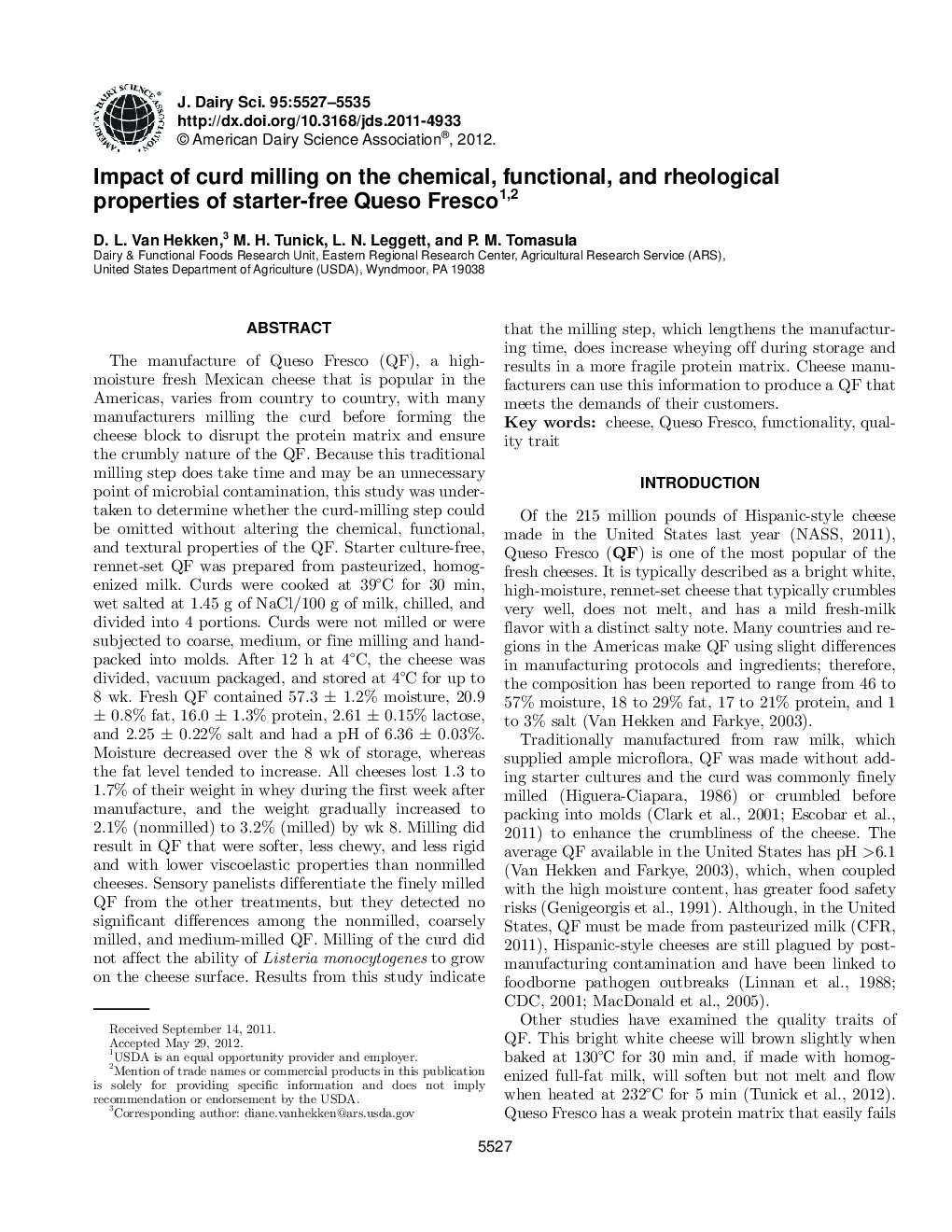| کد مقاله | کد نشریه | سال انتشار | مقاله انگلیسی | نسخه تمام متن |
|---|---|---|---|---|
| 10981140 | 1108075 | 2012 | 9 صفحه PDF | دانلود رایگان |
عنوان انگلیسی مقاله ISI
Impact of curd milling on the chemical, functional, and rheological properties of starter-free Queso Fresco1,2
دانلود مقاله + سفارش ترجمه
دانلود مقاله ISI انگلیسی
رایگان برای ایرانیان
موضوعات مرتبط
علوم زیستی و بیوفناوری
علوم کشاورزی و بیولوژیک
علوم دامی و جانورشناسی
پیش نمایش صفحه اول مقاله

چکیده انگلیسی
The manufacture of Queso Fresco (QF), a high-moisture fresh Mexican cheese that is popular in the Americas, varies from country to country, with many manufacturers milling the curd before forming the cheese block to disrupt the protein matrix and ensure the crumbly nature of the QF. Because this traditional milling step does take time and may be an unnecessary point of microbial contamination, this study was undertaken to determine whether the curd-milling step could be omitted without altering the chemical, functional, and textural properties of the QF. Starter culture-free, rennet-set QF was prepared from pasteurized, homogenized milk. Curds were cooked at 39°C for 30 min, wet salted at 1.45 g of NaCl/100 g of milk, chilled, and divided into 4 portions. Curds were not milled or were subjected to coarse, medium, or fine milling and hand-packed into molds. After 12 h at 4°C, the cheese was divided, vacuum packaged, and stored at 4°C for up to 8 wk. Fresh QF contained 57.3 ± 1.2% moisture, 20.9 ± 0.8% fat, 16.0 ± 1.3% protein, 2.61 ± 0.15% lactose, and 2.25 ± 0.22% salt and had a pH of 6.36 ± 0.03%. Moisture decreased over the 8 wk of storage, whereas the fat level tended to increase. All cheeses lost 1.3 to 1.7% of their weight in whey during the first week after manufacture, and the weight gradually increased to 2.1% (nonmilled) to 3.2% (milled) by wk 8. Milling did result in QF that were softer, less chewy, and less rigid and with lower viscoelastic properties than nonmilled cheeses. Sensory panelists differentiate the finely milled QF from the other treatments, but they detected no significant differences among the nonmilled, coarsely milled, and medium-milled QF. Milling of the curd did not affect the ability of Listeria monocytogenes to grow on the cheese surface. Results from this study indicate that the milling step, which lengthens the manufacturing time, does increase wheying off during storage and results in a more fragile protein matrix. Cheese manufacturers can use this information to produce a QF that meets the demands of their customers.
ناشر
Database: Elsevier - ScienceDirect (ساینس دایرکت)
Journal: Journal of Dairy Science - Volume 95, Issue 10, October 2012, Pages 5527-5535
Journal: Journal of Dairy Science - Volume 95, Issue 10, October 2012, Pages 5527-5535
نویسندگان
D.L. Van Hekken, M.H. Tunick, L.N. Leggett, P.M. Tomasula,